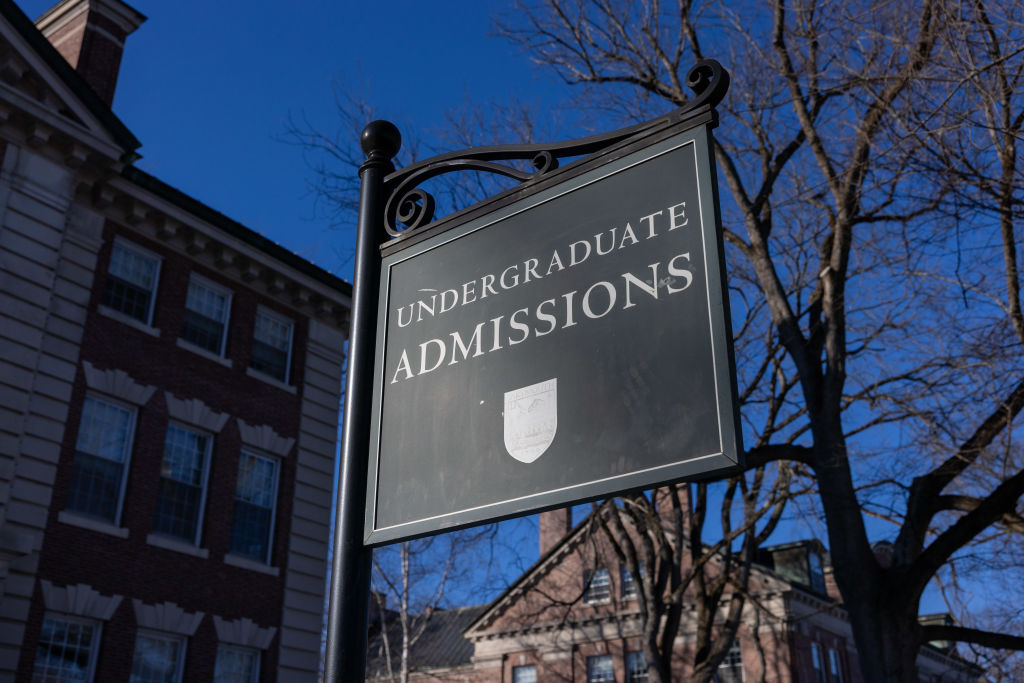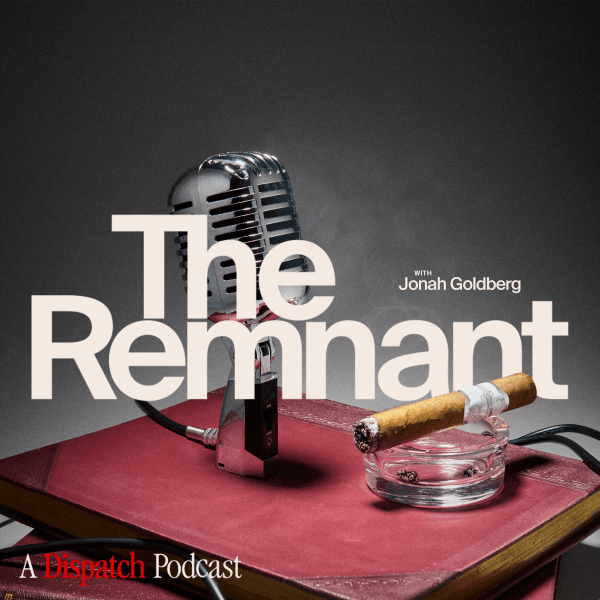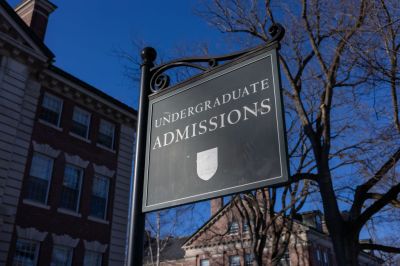It took but a few short years for standardized testing requirements to die.
Among schools accepting the Common App, the share demanding test scores dropped from 55 percent to 5 percent between 2019 and 2021. It was still at 4 percent this most recent school year, long after the COVID emergency that set off the trend. Federal surveys of college administrators depict a similar extinction-level event. They also show that nearly a quarter of non-open-admission colleges were entirely test-blind in 2022, meaning they ignored test scores even if students submitted them.
Yet maybe, just maybe, the tide is turning. This year, we’ve seen a parade of elite schools announce they’re mandating test scores again, including Yale, Dartmouth, and Brown.
Only time will tell how many others will follow suit. Harvard, for example, is committed to remain test-optional through the Class of 2030. Other schools like Cornell, Columbia, and the University of California system have extended their test-optional or test-blind policies as well, even indefinitely.
But it’s a positive sign that at least some colleges are siding with practical reality over activist pressure and a desire for racial balancing. Why might they have done so?
Standardized tests are a valuable tool for picking students able to handle a demanding curriculum. Statistically, they’re the best available measure of college readiness, providing important information beyond students’ GPAs, which have declined in usefulness with rampant grade inflation.
Countless studies have proven the power of standardized tests to predict college success, which has been a resounding theme across the recent announcements. “SAT and ACT scores are highly predictive of academic performance at Dartmouth,” reported a working group at the school. Similarly, Yale’s SAT policy announcement went so far as to say that “test scores are the single greatest predictor of a student’s future Yale grades.”
Standardized tests’ obvious advantage is that they’re, well, standardized. Everyone is ranked on the same metric, no matter what high school they went to or how strict their teachers were. And while bias allegations have long surrounded the SAT and standardized tests in general, the simple fact is that they predict success well for all groups. Disadvantaged students do not tend to overperform their test scores when they get to college as one would expect if those scores were artificially and unfairly low.
Indeed, a good test score is a particularly valuable way for disadvantaged students to show their strength. Many schools use tests as part of a deliberate search for such students, and virtually all schools that consider tests do so as part of a larger process, not in isolation.
Dartmouth’s working group notes that the school interprets test scores in the “context” of the student’s high school, essentially giving a break to bright kids from generally low-scoring schools, and that “some less-advantaged students withhold test scores even in cases where providing the test score would be a significant positive signal to Admissions.” (They knew this because, for research purposes, they were given access to the scores of students who hadn’t submitted them.) This was particularly true for disadvantaged applicants with scores that were low relative to the typical Dartmouth student, but nonetheless high after the school adjusted for context—a nuance few high-school students, or even parents, will figure out on their own.
Similarly, Yale’s research found that when lower-income students didn’t submit their test scores, admissions officers tended to be underwhelmed, since these kids’ high schools often didn’t offer the kinds of demanding coursework and well-written recommendation letters that can plausibly substitute for sky-high SATs.
On much the same principle, some states give standardized tests at no cost to all students during the school day. Bright poor kids won’t be passed over if everyone takes the test, and research shows a boost to low-income students’ college attendance and graduation from this policy.
This should have been an attractive alternative to ditching tests, and it still can be. But there’s another angle to the story as well.
For a college administrator who just wants to admit capable students in a fair and objective way, standardized tests clearly deserve to be a big part of the formula, and thus can’t be merely optional. But for a college administrator who wants to sculpt a particular demographic balance, especially in terms of race, test-score requirements introduce another set of trade-offs.
If test scores accurately measure skills, they necessarily also reflect the socioeconomic disparities evident throughout American society. On average, the rich outscore the poor, and whites outscore blacks even when their families have the same current income. It’s hardly crazy for schools to think they can get “better” demographics without test scores than with them, given these gaps. Moreover, following the Supreme Court’s decision in Students for Fair Admissions, schools may no longer cancel out racial disparities in test performance by using race itself as a factor in admissions.
As even David Leonhardt of the New York Times conceded in a now viral defense of the SAT, “If selective colleges made admissions decisions based solely on test scores, racial and economic diversity would indeed plummet.”
In practice, however, the demographic impact of dropping tests hinges on how they were used to begin with, on what replaces them, and on which students choose to share their scores and how admissions officers treat those who don’t—especially if tests are optional instead of ignored entirely.
Importantly, non-academic factors say more about an applicant’s social class than about their potential future success, largely because expensive private schools specialize in providing students the right mix of extracurriculars and drafting enthusiastic recommendations. Even GPA correlates with parental income, though not as strongly as test scores. Richer parents may also provide better advice as to whether submitting scores is the right strategy when they’re optional (recall Yale’s and Dartmouth’s findings on how their optional systems played out).
In terms of class, these trade-offs are frankly not too difficult to manage. Class-based preferences are still legal, so any time a school wants to let in more poor kids, it can simply do so, whether it uses tests as part of the process or not.
But how do these trade-offs add up for race, where such tidy adjustments are now illegal? That’s a more difficult question than some test supporters (and I very much consider myself one) would like to admit.
Bottom-line research on how test-score requirements affect racial demographics is sparse and mixed, as I discussed in a Manhattan Institute report last year. Analyzing federal enrollment data covering 2019 through 2021—the years of the test-requirement revolution—I found that dropping a test-score requirement appeared to boost black freshman enrollment only about 5 percent at schools in the top half of academic selectivity, while having little impact on Hispanics. I cautioned, however, that these pandemic (and George Floyd racial reckoning) years were chaotic for higher education, and that the Supreme Court’s affirmative action ruling could change the way colleges approach these issues.
If schools deliberately replace the previous role of testing with socioeconomic preferences tailored to achieve maximal racial impact, for example, the effect could be much larger in the future. As my report detailed, schools can more closely proxy for race if they cast a broader net than simply parental income, including factors like wealth, family structure, and the poverty rates in the student’s broader neighborhood and high school. Even then, class preferences have to be quite large to reproduce the racial balances once obtained through affirmative action.
Some schools may also drop test scores just so the data can’t be used to prove the continued use of illegal racial preferences. Alternatively, if schools without test requirements rely on other measures that favor the privileged, and if schools reinstating testing couple them with extensive adjustments for social class, things will turn out quite differently.
Maybe in a few years I’ll update my analysis to find out. But for now, colleges find themselves at a crossroads: They can walk back their pandemic-era policies on the rock-solid grounds that test scores genuinely predict college success and, used carefully, can help them discover bright kids from disadvantaged backgrounds. Or they can focus on maintaining racial balance without affirmative action and conclude—perhaps correctly—that test scores hinder that goal.






Please note that we at The Dispatch hold ourselves, our work, and our commenters to a higher standard than other places on the internet. We welcome comments that foster genuine debate or discussion—including comments critical of us or our work—but responses that include ad hominem attacks on fellow Dispatch members or are intended to stoke fear and anger may be moderated.
With your membership, you only have the ability to comment on The Morning Dispatch articles. Consider upgrading to join the conversation everywhere.